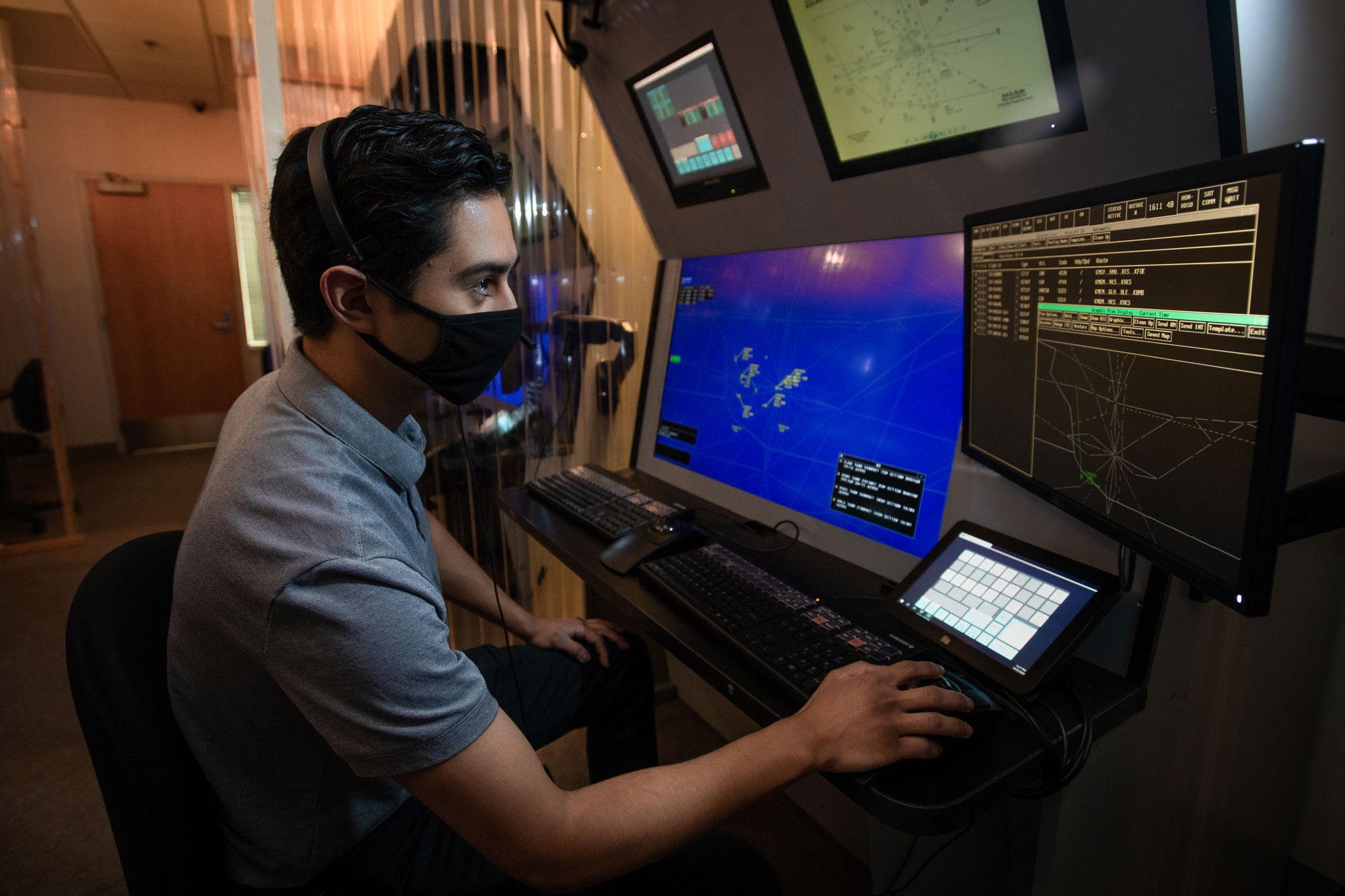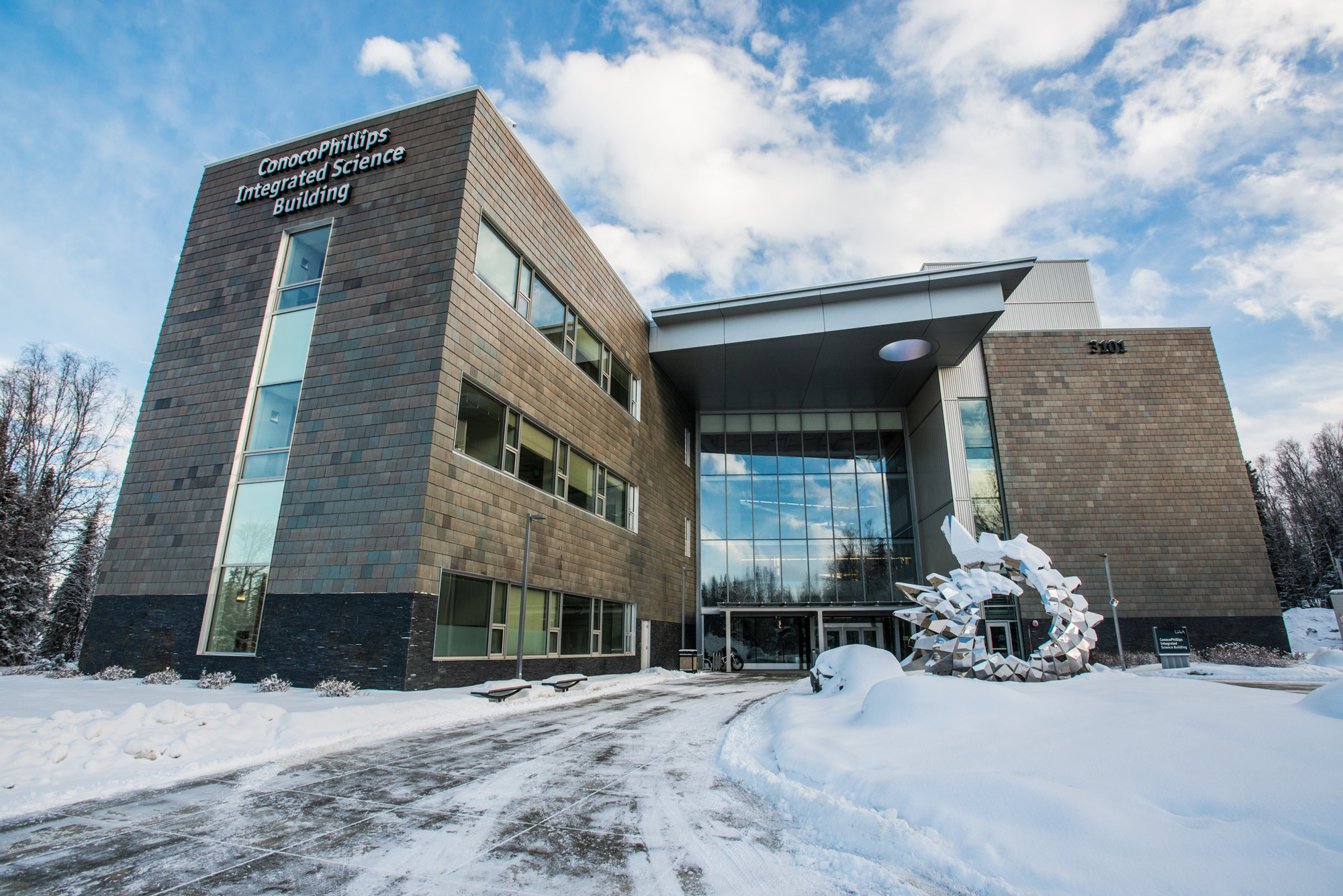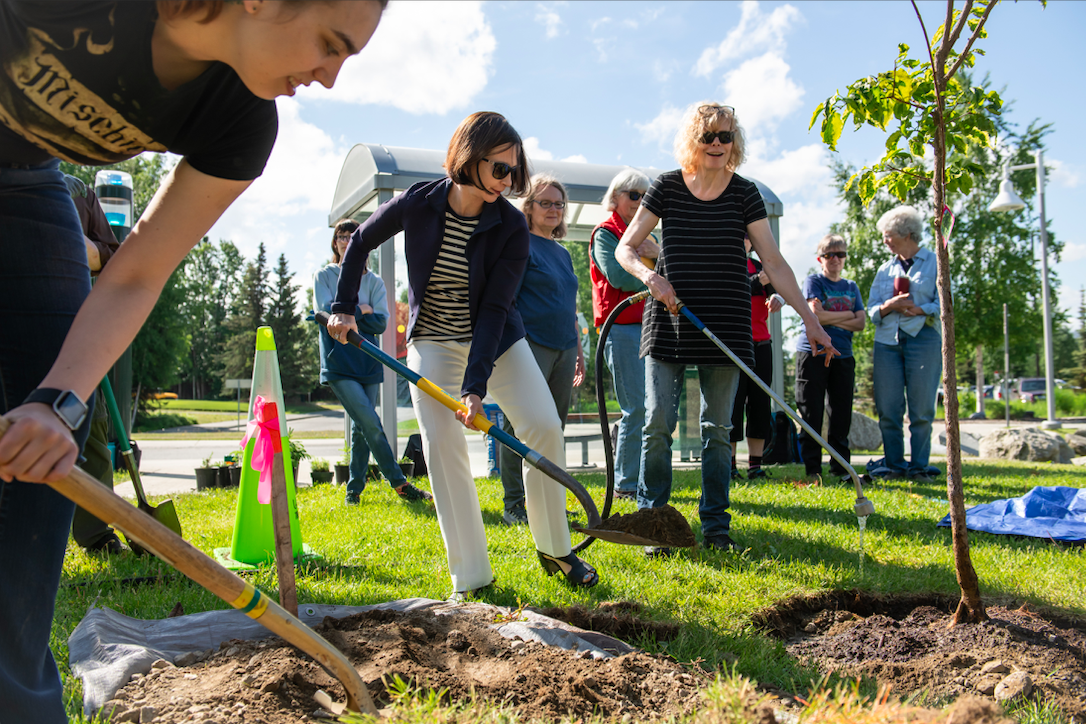Inside scoop: Upgraded air traffic control radar simulator on the cutting edge
by Matt Jardin |

Age is sometimes considered to have an inverse relationship with technology. That stereotype couldn’t be further from the truth for the UAA Aviation Technology Division’s air traffic control (ATC) program. Now in its 50th year, ATC is commemorating this landmark anniversary by unveiling new cutting-edge technology, the first of its kind among aviation schools in the U.S.
Two years ago, ATC received a grant from the Alaska Technical Vocational Education Program (TVEP) to upgrade its radar simulator, which at that point was 15 years old. According to Sharon LaRue, associate professor of aviation technology, the new simulator is designed with two objectives: The first is to teach students the essentials to ensure aircraft don’t collide — something UAA was already equipped for.
New to the curriculum, however, is training in what LaRue refers to as “off to the side” (OTTS) responsibilities. These duties include maintaining additional data streams in communication with other air traffic controllers, providing a more expansive view of other aircraft, obstructions on the ground and restricted airspace.
Despite being a crucial part of the job, many ATC curricula across the country aren’t able to provide accurate OTTS education due to the opaque atmosphere surrounding the FAA Academy’s ATC certification process, which boasts a national success rate of 40-50%. The nexus of all ATC careers, graduates of any ATC program eventually find their way to the FAA Academy in Oklahoma City for final testing.
Serendipitously, the TVEP grant was awarded around the same time ATC instructor Mike Moravec joined the faculty. Prior to UAA, he served for 12 years as an instructor at the FAA Academy, making him the ideal resource to prepare students and to build the new radar simulation to mirror what is being used in Oklahoma City.
“Students really get one shot, and it's about a four-month-long opportunity down in Oklahoma City. Most people off the street will spend several weeks looking at what's being presented to them at the academy trying to figure out what the heck is going on. When they finally get that aha moment, it’s often too late,” said Moravec. “Whereas our students, when they walk in, they're going to look around and say, ‘I've seen this before. I know what that is.’ So now they're no longer dwelling on lower level cognition, they're actually focusing on their tactics.”
To construct a radar simulator that more accurately resembles the notoriously mysterious program at the FAA Academy, Moravec partnered with vendor Metacraft, a small software outfit based in Massachusetts. Through this collaboration and by drawing on his years of teaching on the inside, Moravec can identify specific measurables and program a wide variety of ATC scenarios that UAA students can expect to see when they eventually arrive in Oklahoma City.
In a turn of inopportune timing, the completion of the new radar simulation came shortly before the start of the COVID-19 pandemic. Despite this, the excitement around the revamped program has grown.
“Strangely enough, our numbers have increased during COVID, and it’s probably due to the radar simulator,” said LaRue. “The aviation community isn't that big and students hear the buzz. There's a lot of rumors that circle around and they hear it and they get excited. Plus, honestly, it's just cool. It's like Star Trek in there.”
Further following the lofty ideals of Star Trek, UAA’s first-of-its-kind radar simulator has the potential to be adopted by other ATC programs across the country that want that insight into the inner workings of the FAA Academy.
The new radar simulator arrives on the heels of an equally impressive upgrade to UAA’s air traffic control tower simulator, which is one of the only operational 360-degree tower simulators in the nation.
Both simulations are a perfect demonstration of the investment placed on Alaska’s aviation industry, which is a major part of the state’s economy and serves approximately 82% of Alaska communities, many of which are not connected by the contiguous road system. Additionally, larger swaths of Alaska airspace are often overseen by only one or two air traffic controllers, whereas smaller, more densely-populated areas operate at a surplus.
“We have been doing this longer than almost any school,” said LaRue. “We were one of the original 13 schools that were brought into this air traffic control program in the mid-‘80s and we've always been known as one of the top schools. So it’s important as a way for a lot of Alaska students to get an education at a low price to get a really great job. For us to be able to provide that opportunity right here as opposed to making students go somewhere else is huge.”

Written by Matt Jardin, UAA Office of University Advancement
 "Inside scoop: Upgraded air traffic control radar simulator on the cutting edge" is licensed under a Creative Commons Attribution-NonCommercial 4.0 International License.
"Inside scoop: Upgraded air traffic control radar simulator on the cutting edge" is licensed under a Creative Commons Attribution-NonCommercial 4.0 International License.














